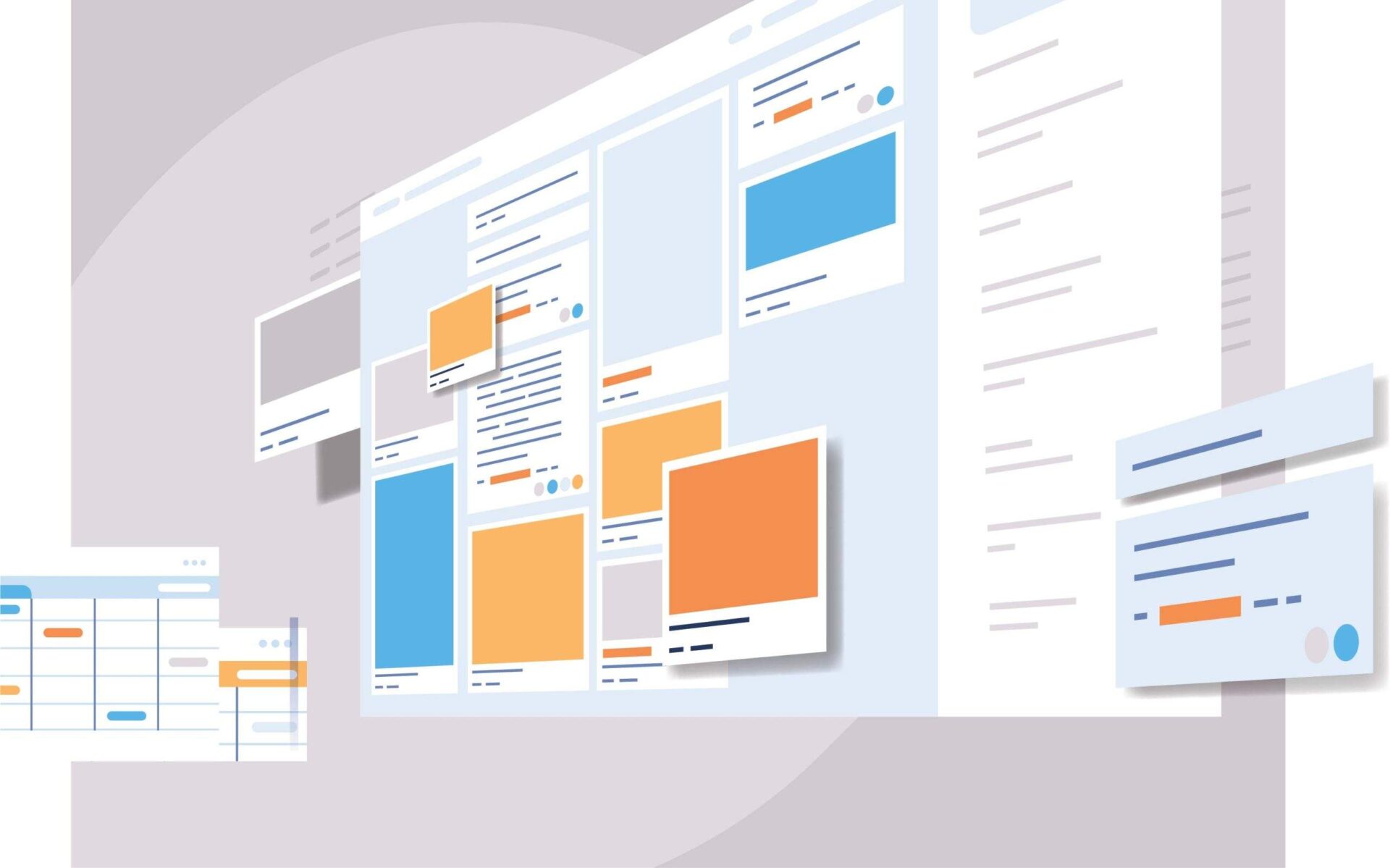It’s no secret that the look and feel of a website is critically important. Not only do aesthetics influence users’ first impressions, but they also have an effect on whether or not people choose to stay on your site. But what you may not realize is there are additional factors at play that can determine how successful your website is: search engine optimization (SEO) and user experience (UX). The way in which UX and SEO intersect when it comes to website design can be complex, but when executed correctly can make all the difference in improving visibility, engagement, and overall success. In this blog post we will explore why UX and SEO matter for any website — we’ll identify some key considerations for improving performance with both techniques together — so stick around as we dive into Beyond Aesthetics: The Intersection Of UX And SEO In Website Design!
What are UX and SEO, and Why do They Matter in Website Design
There are two major factors that can make or break a website’s success: UX and SEO. UX stands for user experience, and it encompasses everything from layout and design to ease of use and accessibility. Simply put, if your website is difficult to navigate or doesn’t meet the needs of your audience, your visitors won’t stick around for long. That’s why UX is so important in website design. On the other hand, SEO stands for search engine optimization, and it refers to the process of optimizing your website’s content to rank higher in search engine results pages (SERPs). In other words, it’s all about helping your target audience find your website through search engines like Google. Both UX and SEO are critical to the success of any website, as they ensure that visitors can easily find and use your site, leading to increased engagement, conversions, and overall success. Whether you’re designing a new website or looking to improve an existing one, UX and SEO should always be top of mind.
How UX Impacts SEO – Best Practices for Optimizing User Experience
User experience (UX) is an important factor to consider when optimizing your website for search engine optimization (SEO). By ensuring that your content and design are user-friendly, you can encourage users to stay on the page longer, creating a better overall user experience. Best practices for optimizing UX include making sure all elements of the design and webpages load quickly, using intuitive navigation menus that make finding information easy, and providing quality content that is engaging and informative. Moreover, using schema markup to provide structure to your content can go a long way in helping it rank higher. Ultimately, great UX helps create a positive relationship between your visitors and website which will improve not only SEO ranking but also conversion rates and ROI.
Establishing a Clear Hierarchy of Information on Your Website
Building a website that is both user-friendly and optimized for search engines can be challenging, but it’s essential for website success. The intersection of UX and SEO involves creating a website that is easy to navigate, visually appealing, and search engine friendly. The key to achieving this is by establishing a clear hierarchy of information on your website. By prioritizing the most important content and making it easily accessible, you can direct visitors toward the most relevant pages and help search engines understand the structure of your site. Designing an intuitive and structured website takes careful planning, but it’s a crucial step toward building a site that’s both functional and user-friendly.
Designing for Mobile First – Knowing Key Strategies to Enhance the User Experience
We live in a digital world that is constantly evolving, and in today’s business climate, it’s imperative to have a website that is not only visually appealing but also user-friendly. As mobile usage continues to grow, it’s more important than ever to design websites that work well on smaller screens. This is where the concept of mobile-first design comes in. Designing for mobile-first means designing with the mobile user in mind and then scaling up to larger screens. But designing for mobile-first isn’t just about the design, it’s also about enhancing the user experience through SEO strategies. By optimizing your site for mobile, you can improve your site’s performance and ultimately drive more traffic to your site. In this article, we will discuss key strategies for enhancing the user experience and optimizing your site for mobile-first design.
Utilizing the Latest Search Engine Algorithm Updates to Maximize Visibility
Usability, or UX, and search engine optimization (SEO) are essential for online visibility, especially in the age of Google algorithms. With new developments mounting up on a regular basis, it is becoming increasingly important to stay updated with the latest changes and trends in order to keep your website from losing too much traffic due to outdated SEO practices. Fortunately, there are a plethora of tools available that can help us better understand why and how our website is performing – like keyword research tools, technical SEO audits, and analysis of competitor activity. Taking advantage of these resources can help you stay one step ahead of the competition and ensure maximum visibility for your business.
Creating an Intuitive Navigation System for Better User Experience
A website can have all the great content in the world, but if it’s difficult to navigate, users won’t stick around for long. That’s why creating an intuitive navigation system is crucial for a better user experience. By organizing your website in a logical and intuitive manner, visitors can easily find what they’re looking for and explore your site with ease. Navigation menus should be clear and concise, with relevant categories that correspond to the content on your site. Additionally, utilizing clear and descriptive labels, breadcrumbs, and search functions can enhance the overall user experience. By investing time and effort into creating a seamless navigation system, you’ll keep visitors engaged, increase the likelihood of them returning, and ultimately achieve your website’s goals.
Implementing Effective Calls-to-Action to Increase Conversion Rates
Your website can have all the bells and whistles, but without a clear and effective call-to-action, your conversion rates will continue to be lackluster. Implementing a call-to-action that resonates with your audience and encourages them to take action is essential for driving conversions. Whether it’s a button that prompts a user to sign up for a newsletter or a pop-up that encourages them to make a purchase, it’s important to make sure your call-to-action is prominently displayed and easy to find. By testing and tweaking your calls-to-action, you can increase the conversion rates of your website and ultimately drive more revenue.
Tips for Improving Overall Website Performance and Speed
In today’s fast-paced digital ecosystem, the speed and performance of your website have a significant impact on user experience, search engine rankings, and business success. Therefore, optimizing your website’s performance, SEO, and speed is crucial. One of the most effective ways to do this is by adopting a streamlined approach, starting with a fast and reliable hosting service, reducing HTTP requests, optimizing images and videos, using compression, leveraging browser caching, and implementing a content delivery network (CDN). Additionally, keeping your website’s content fresh, relevant, and engaging, using relevant keywords, and regularly auditing your site’s performance to tweak and improve as needed can help you stay ahead of the competition and attract and retain more visitors.

Conclusion
Ultimately, UX and SEO must go hand in hand when creating an SEO-friendly web design. By taking a user-centric approach to the design process and applying best practices, users can be engaged through an enhanced user experience which can lead to increased visibility and higher conversation rates. By establishing a clear hierarchy of information on the site and creating intuitive navigation systems that make it easy to find information, website design can be improved in ways that facilitate better search engine discovery. Additionally developing for mobile first and utilizing the latest search engine algorithm updates are essential steps for maximizing visibility. Finally, web analytic tools should always be used to track user behavior so any changes made to improve UX impact SEO in the most positive way possible. With these tactics, any website designer is sure to create experiences that satisfy even the most discerning users while maximizing visibility at the same time.

































